Cabbage, planting and caring in the open ground for which is no more difficult than for other garden crops, is a plant with a powerful leafy stem from the Cruciferous family. The high content of mineral salts, amino acids and vitamins makes the vegetable a very valuable food product, which began to be used in cooking 4000 years ago.
Material Content:
Varieties of cabbage for open ground
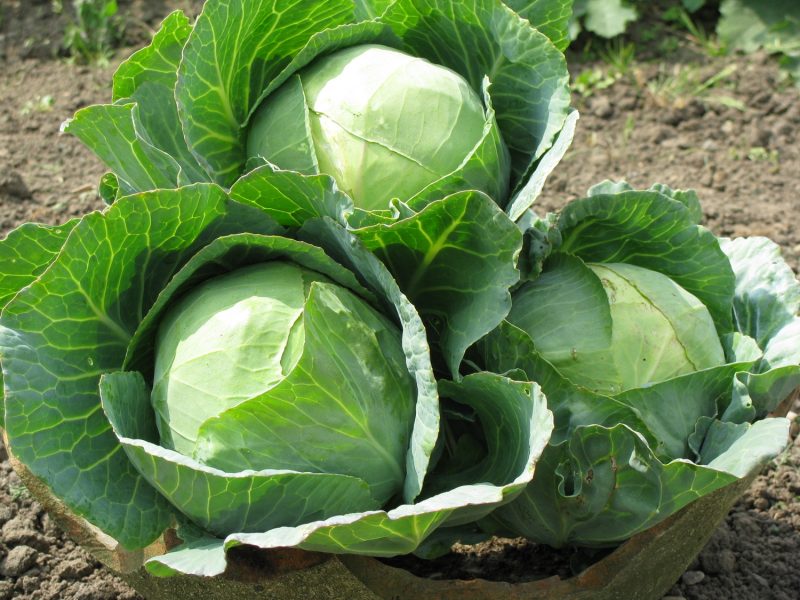
In the garden, you can often find such varieties of garden cabbage as white cabbage, cauliflower, broccoli, Brussels and Beijing.
White cabbage
The most cultivated species in temperate zones, distinguished by a low powerful stalk, covered with large leafy plates, with an apical bud that has grown to a large size.

Popular varieties:
- June - A common early variety, for the ripening of which is enough 2 months after transplanting seedlings. Its cold resistance allows it to withstand spring return frosts. The mass of head of cabbage varies within 2.5 kg.
- Glory - a well-known mid-season variety with good taste, which is suitable for winter harvesting, transportation and storage. The average weight of a flat-headed cabbage is 5 kg.
- Amager - Late high-yielding variety with dense foliage of bluish-green color. Great for transportation and long-term storage.
Cauliflower
The species is represented by a creamy, grainy, tuberous head surrounded by green leafy plates, which consists of rudimentary inflorescences on branched, shortened shoots.
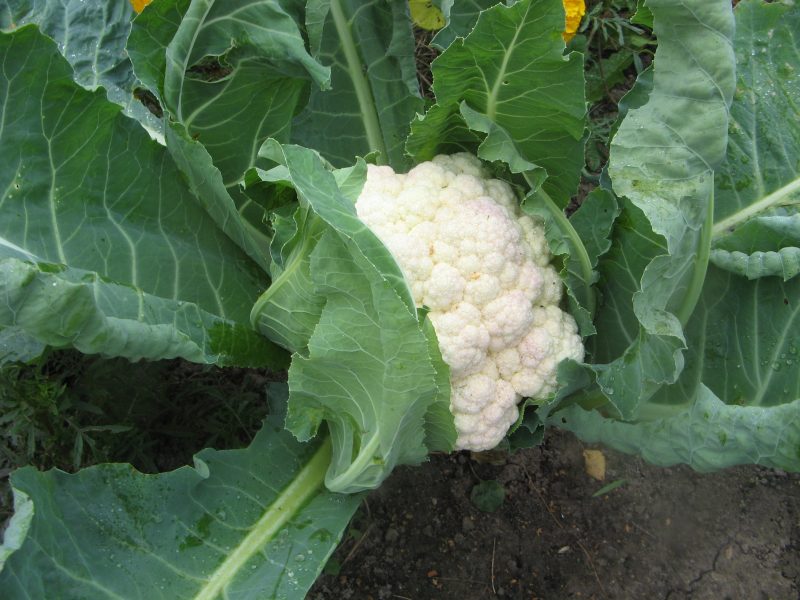
Popular varieties:
- Guarantee - an early variety with large inflorescences and a pronounced taste. It is resistant to damage by vascular bacteriosis and has good keeping quality.
- Snowball - an excellent early variety, yielding crops in the form of snow-white heads weighing more than 1 kg. It is resistant to many specialized diseases and easily adapts to adverse weather conditions. The compactness of the variety allows you to place a large number of seedlings in small areas.
Broccoli
The genetic predecessor of cauliflower with green or purple inflorescences.
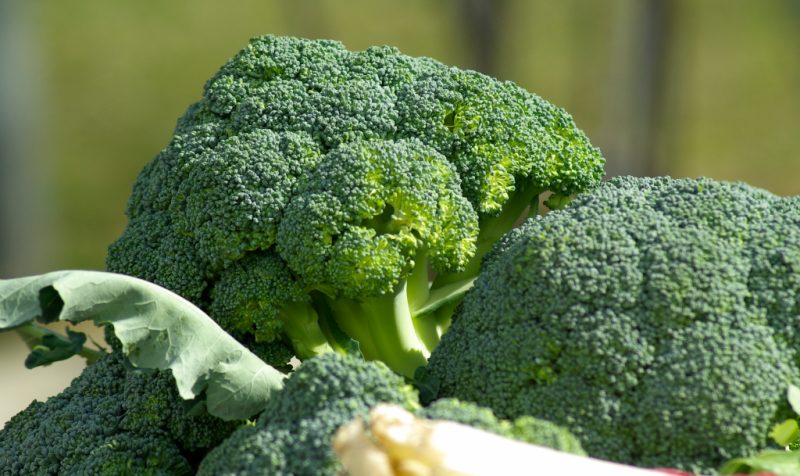
The most common varieties include:
- Tone - An early variety with a dark green head weighing up to 0.5 kg, quickly forming lateral shoots after cutting the central fruit.
- Monterey - a hybrid of late ripening with high yields, distinguished by the absence of side shoots.
Chinese cabbage
A species with a loose oblong head.
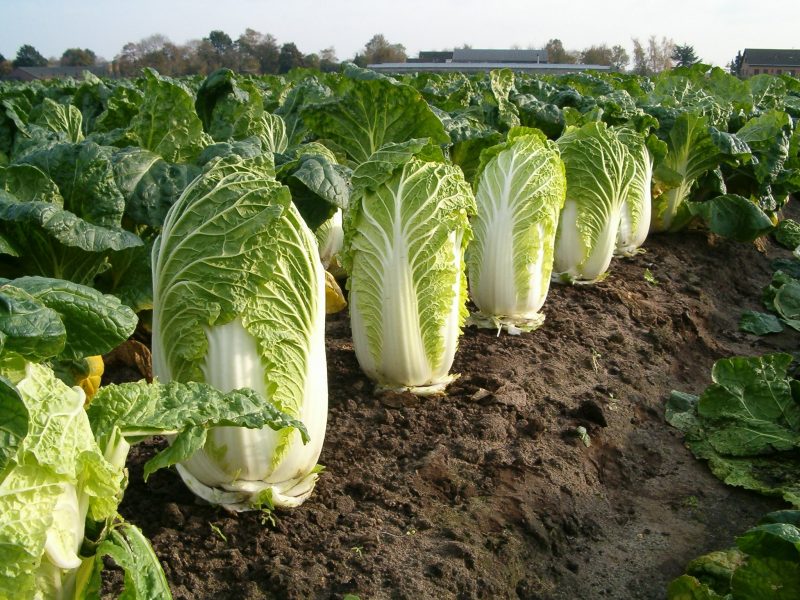
Among the most popular varieties stand out:
- Champion - An early variety with fruits up to 2.5 kg, which stands out for its excellent taste, which persists during long-term storage.
- Grenade - medium early cabbage with dense juicy leaves collected in a cylindrical fruit weighing up to 3 kg.
Brussels sprouts
Species with a long stem covered with small heads of cabbage, high in vitamin C.
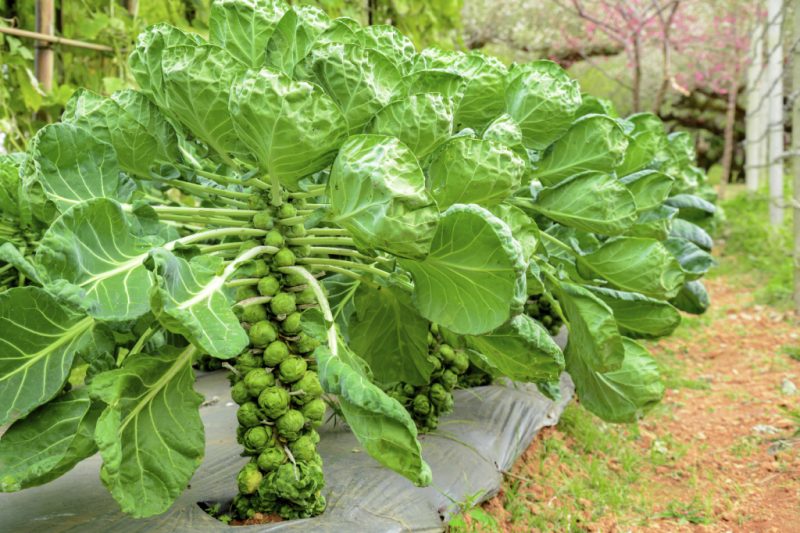
Popular varieties:
- Dolmik - An early high-yielding variety with a large number of fruits weighing up to 17 g.
- Curl - late frost-resistant variety, valued for excellent taste.
Cabbage - cultivation features
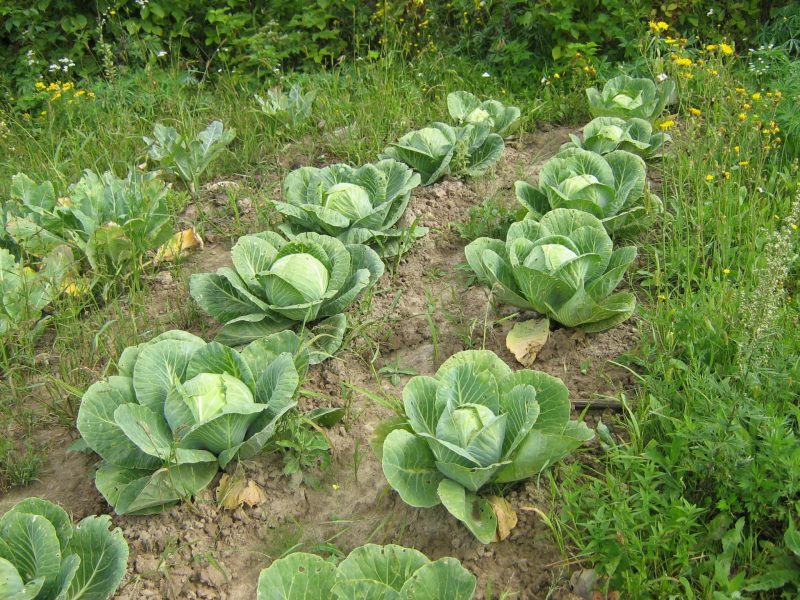
The cultivation of a representative of cruciferous, rich in vitamins and minerals, has its own characteristics, which must be taken into account:
- the choice of variety, depending on the purpose of the future fruit;
- site preparation taking into account the photophilous culture;
- competent and systematic care, including abundant watering and treatment before heading out.
Outdoor landing
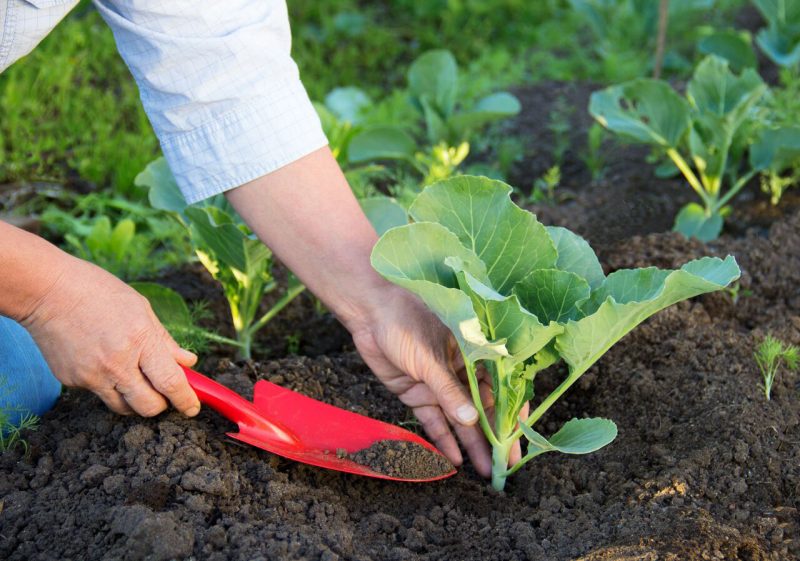
In order to grow healthy, strong fruits with excellent taste, you should plant the cabbage with the help of pre-driven seedlings.
Growing seedlings from seeds
When growing seedlings, the timing of sowing seeds for seedlings is taken into account, which depend on the growing season of the variety selected by the gardener:
- for early varieties, the first half of March is suitable;
- mid-ripening seeds are sown since the end of April;
- sowing of late cabbage is carried out in the first half of April.
The direct process of distillation of seedlings is carried out as follows:
- The seedling tank is filled with nutritious soil mixture with good air and water permeability, prepared from equal amounts of turf land, peat and sand.
- The seed is warmed up for 20 minutes in hot water, after which it is placed in a solution of manganese for disinfection.
- After half an hour, the treated seeds are embedded in moist soil 1 cm deep and covered with a film.
- After 5 days, when the container is kept in a room with a temperature of 20 ° C, shoots appear.
- Soil with crops is watered with a weak solution of potassium permanganate.
- The film is removed, and the temperature drops to 6-10 ° C.
- When the first leaf is formed in the seedlings, the temperature regime is set between 14-18 ° C during the day and 6-10 ° C at night.
Important! Seeds of not all varieties can be soaked before sowing, which is indicated on the manufacturer's packaging.
Picking seedlings
After 15 days after the development of the first true leaf, seedlings dive:
- An hour and a half before the procedure, the seedlings are watered.
- Seedlings with a lump of land are transplanted into individual dishes: the root of each seedling is shortened by ⅓, after which it is buried in a substrate with cotyledon leaves.
Advice! If the gardener wants to avoid picking, then sowing seeds should be carried out in separate pots.
Ground requirement, location selection
For the successful cultivation of cabbage, a well-lit area with slightly acidic fertile soil is selected, on which cruciferous crops have not been grown for at least the last 3 years.
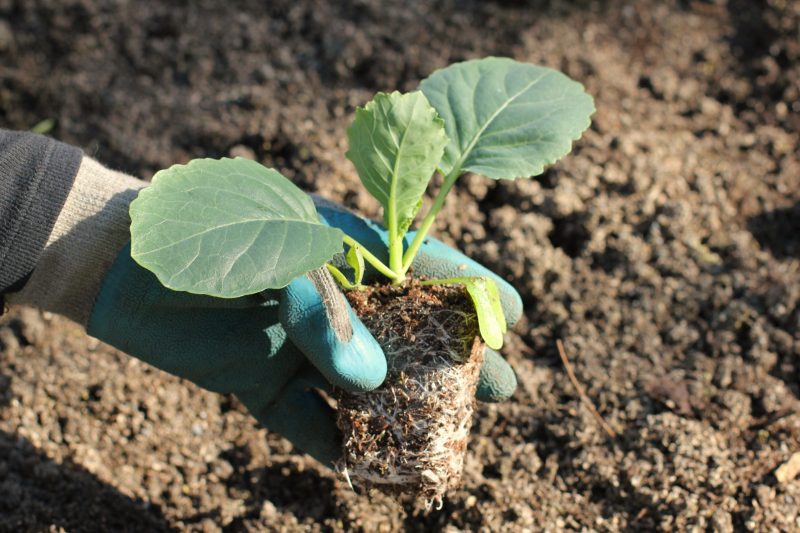
The cabbage plot is prepared in advance:
- In autumn, in dry weather, the soil is dug up to a depth of 20 cm and is not leveled.
- With the advent of spring, when the snow melts, the soil on the earth becomes a rake - a "moisture closure" is carried out.
How and when to plant?
When 3 pairs of true leaflets are formed on the seedlings, and their height will be 15-20 cm, you can start planting seedlings in open ground.
The procedure consists of the following steps:
- On the prepared site, digging holes are slightly larger than the seedling rhizome, according to a 50x60 cm pattern.
- Sand, peat, humus, 50 g of ash, 5 g of azofoska are placed in each hole and mixed thoroughly with the soil.
- A seedling with an earthen lump descends into the recess and is sprinkled with soil.
Advice! If the seedling is too long, then it should be placed in the hole so that the first leaf is flush with the ground.
The nuances of landing for the winter

Known for a long time planting cabbage for the winter is quite simple:
- With the onset of cold weather, dry seeds are planted in the soil to a depth of 1.5-2 cm.
- After the snow cover has melted, the crops are covered with sawdust or spruce branches to protect them from the cold.
- Once stable heat is established, the protective cover is removed.
Cabbage - care in the open ground
Care for cabbage must be carried out in compliance with basic agricultural requirements, which will ensure a rich harvest.
Watering
The culture needs abundant watering, which is carried out after sunset at such intervals:
- in hot time - every 2-3 days;
- at a moderate temperature regime - every 5-6 days.
Attention! To better maintain moisture and provide cabbage with additional nutrients, the beds are mulched with a peat layer of 5 cm.
Top dressing
To form a full crop, cabbage needs two top dressings:
- At the beginning of active growth, plants are fed 10 g of ammonium nitrate, diluted in 10 l of water, at the rate of 2 l per instance.
- When heading out, mineral fertilizers are applied with a similar consumption rate - 4 g of urea, 5 g of double superphosphate, 8 g of potassium sulfate diluted in 10 l of water.
Loosening and hilling
After each watering, it is recommended to loosen the ground to ensure free access of air to the roots of cabbage.
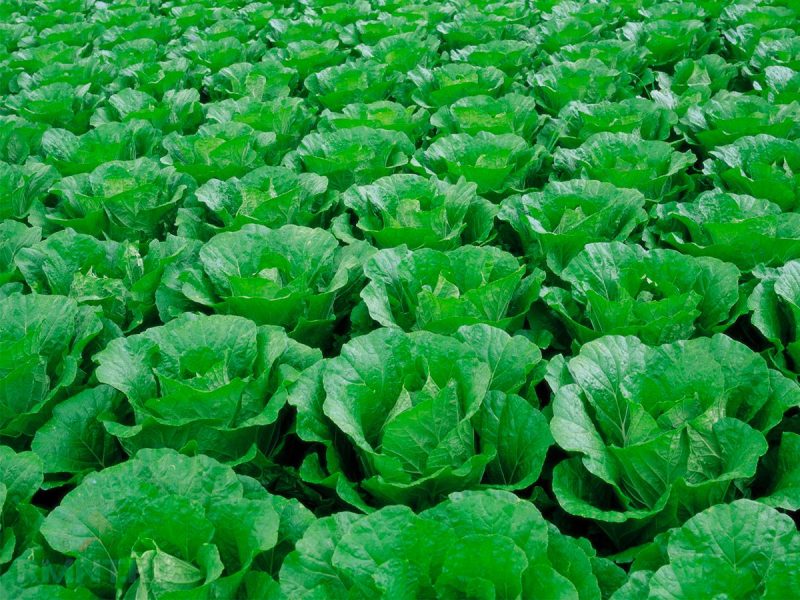
Hilling plants is carried out twice:
- 20 days after planting seedlings in the garden;
- 10 days after the first hilling.
Diseases, pests of cabbage and treatment rules
Often, harmful organisms cause trouble for gardeners.
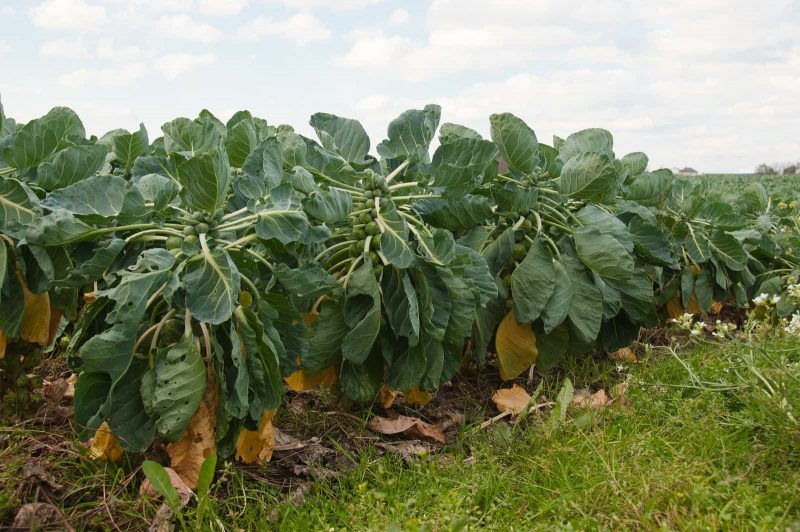
Among the diseases stand out:
- Kila and the black leg - fungal diseases developing in the seedling phase. In the case of keel, the affected specimen is removed, and the place where it grew, is poured with lime. In order to prevent the development of the black leg, presowing seed disinfection is important. If the disease manifests itself, then the crops should be treated with fungicide.
- Peronosporosis - Another fungal disease whose pathogen is on the seeds. In case of non-compliance with the presowing treatment of seed and the development of the disease in the open ground, the plantings are treated with a fungicide solution.
- Fusarium wilt - when signs of the disease appear, the affected specimen is removed from the garden along with the rhizome and burned to prevent further spread.
Of the pests that are often found on cabbage, cabbage bug, cabbage leaf beetle and crypto-scavenger are secreted, to control which spraying is carried out using insecticides.
Important! Pesticides are carried out prior to the formation of heads of cabbage to avoid the accumulation of pesticidal residues in the leaf plates.
Harvesting and storage
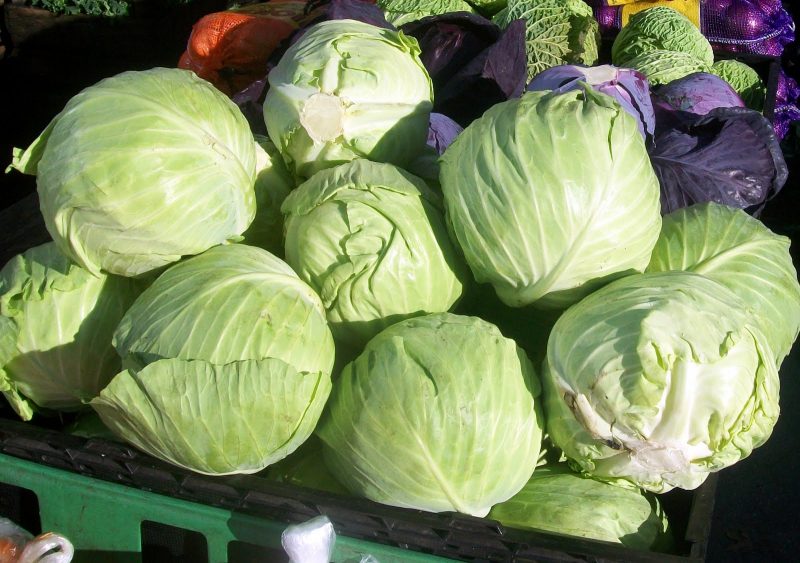
Harvesting of ripened heads of cabbage and their further storage is carried out according to the following scheme:
- Three weeks before harvesting, watering of cabbage stops.
- When the temperature drops at night to -2 ° C, harvesting begins.
- Healthy vegetables are selected and placed under a canopy.
- After a day, the stumps are cut off by 2 cm, and the heads of cabbage are moved for storage to the cellar or other adapted room.
- Fruits are stored, laid out in a single layer on shelves, folded in a pyramid on wooden shields or in limbo.
Attention! For storage, varieties of late ripening with dense heads of cabbage are used.
So, with the right approach to growing cabbage, the gardener will collect a high-quality and large crop that he can enjoy for a long time.












